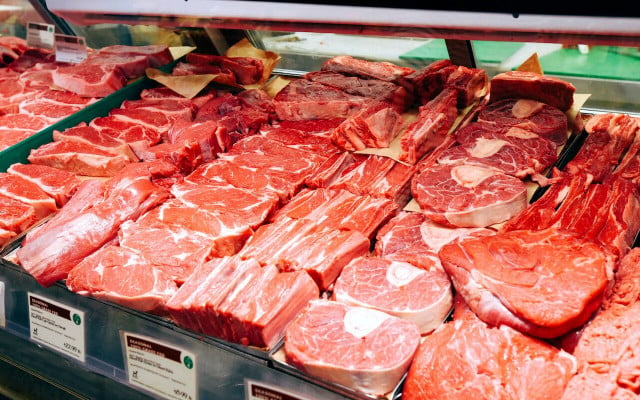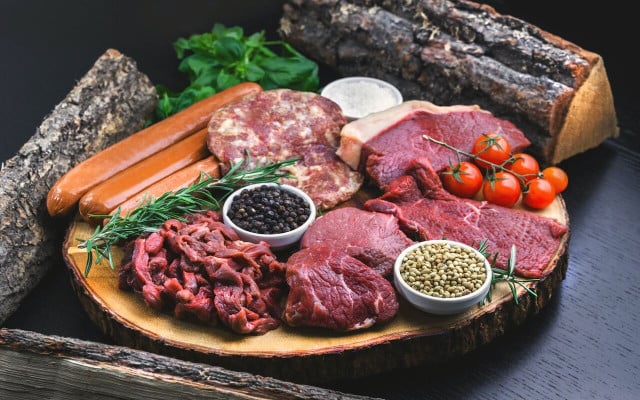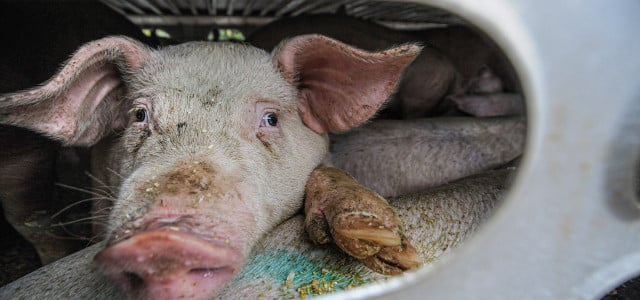Even if you’ve never heard of meat glue, you’ve likely consumed it. We’ll take a look at the controversy surrounding this food additive and what you should look out for.
Unless you’re hypervigilant when it comes to checking the ingredients of everything you consume, you’ve probably been consuming meat glue without even realizing it. This common food additive isn’t just limited to meat, so vegans and vegetarians beware. We’ll look at what meat glue is and the controversy surrounding this ingredient.
What is Meat Glue?
Despite the name, meat glue isn’t some odd paste made up of animals. It’s an enzyme known as transglutaminase that acts as a sort of “biological glue” by forming bonds between different types of protein.
Transglutaminase occurs naturally in humans, plants and animals, but is common in the commercial food industry as well. Here, it’s primarily used as a binding agent for foods that contain protein — think meat, poultry, seafood and even tofu — to enhance the texture, appearance and yield.
Though it’s referred to as “meat glue”, its uses extend to strengthening dough, thickening dairy and egg yolks as well as increasing yield in tofu production.
Uses in the Commercial Food Industry



As with many other food additives, this one didn’t appear on the market until the 1990s, when it was discovered that the “meat glue” enzyme could be used to alter the texture and appearance of products like fish, meat and poultry. The goal was to use reduce food waste by “gluing” offcuts together and turning them into sellable products.
The transglutaminase used in the food industry is generally manufactured in one of two ways: either from the blood of cows and pigs or from bacteria derived from plant extracts. It’s commonly sold in powder form, making it easy to use this controversial food additive.
Wondering how meat glue is used to enhance the texture, appearance and yield of protein-containing foods? Let’s take a look at a few examples:
- Chicken nuggets: Unless you make your own using whole chicken breast, these little nuggets are typically created from a mixture of chicken parts that are ground up and “glued” together.
- Imitation crab: As the name suggests, this isn’t crab. It’s made using cuts from inexpensive fish to mimic the flavor, appearance and texture of crab meat.
- Sausage and hot dogs: Ever wondered how certain hot dogs and sausages get their smooth consistency? You can thank meat glue for that — it’s added to help the offcuts stick together.
- Deli meat: While ham, turkey and roast beef come from whole cuts of meat, certain deli meats like baloney or summer sausage benefit from transglutaminase.
- Pork tenderloin: A tenderloin is large at one end and tapers at the other. Meat glue is often used to stick two pieces together to make one larger and more uniform cut of meat.
Recommended read: What if We All Became Vegetarian?
The Controversy Behind This Ingredient



Now that we understand what meat glue is, it’s essential to look at why this ingredient is seen as controversial. This is multi-faceted as ethical and health concerns are associated with this food additive.
Health Concerns
The biggest issue that surrounds meat glue is the potential for contamination of the meat. Once any meat is cut, the risk of developing bacteria increases — particularly on the cut side. It becomes even more problematic when different cuts of meat are glued together, as this can make it harder to cook and kill foodborne illnesses.
It’s also worth noting that a diet containing high amounts of transglutaminase is considered to be unhealthy as the majority of foods that use this additive are highly processed. This means the foods are generally high in sodium and other additives.
Anyone with food allergies, celiac disease, digestive issues or a weakened immune system should avoid consuming transglutaminase wherever possible as the enzyme may react poorly in their bodies.
Ethical Concerns
The use of meat glue also poses a few ethical concerns, namely with the origin of any given product. Imagine spending good money for a filet steak only to find out that it was actually cheap stewing beef glued together to appear as though it was a steak. There’s also no guarantee that the mixture you’re eating all came from the same animal.
Another issue that arises is that of labeling and transparency. As previously mentioned, meat glue can be either plant-based or an animal byproduct. There are two main commercial providers of transglutaminase: Activa (plant-based) and Fibrimex (animal-based). For those that are following either a vegan or vegetarian diet, it’s crucial to know the source — though many labels will simply have “TG” listed without naming the source.
Meat Glue Regulations in the US



The USDA allows this food additive to be used — in fact, it’s estimated that eight million pounds of meat consumed in the US each year contains transglutaminase. According to the FDA, it’s considered to be generally recognized as safe (GRAS). This is in contrast to the EU which banned TG back in 2010 due to the increased potential of bacterial contamination.
Labeling Requirements
Whenever transglutaminase is added to a meat, egg or poultry product, the USDA requires it to be listed on the ingredients label. For other food items like dairy or bread, there aren’t the same requirements.
That said, there aren’t necessarily specific requirements for how it’s listed. Look for the following terms on your ingredients label:
- transglutaminase
- TG enzyme
- enzyme
- TGP enzyme
For any meat product that has been reformed or pieced together, the label must include the fact that it was formed on the ingredients likes, such as “formed pork tenderloin”.
Consumer Advice



If you’re looking for ways to avoid transglutaminase in your diet, the easiest thing to do is to avoid processed foods altogether. Stick with whole foods like fruits, vegetables, whole grains and legumes and reduce your meat consumption. You can do this through plant-based alternatives like making vegan sandwiches instead of using deli meat or using vegan shrimp substitutes.
Reducing your meat consumption can be incredibly beneficial for your body and for the planet. It’s estimated that 92% of the world’s water use is for agricultural purposes, with one-third of that for animal husbandry. Limiting your intake of meat can also reduce harmful greenhouse gas emissions that contribute to climate change and free up valuable land needed to increase biodiversity across the planet.
If you don’t want to give up meat completely, source whole cuts from ethical farms or butchers that offer grass-fed and organic products. Our last piece of advice is to practice conscious consumerism and always read the labels so you know exactly what you’re eating.
Read more:
- Seafood Lovers Beware: These Are the 6 Worst Fish to Eat
- 11 Delicious, Sustainably Sourced Superfoods for Energy
- Emulsifiers in Food: What You Need to Know
Do you like this post?










